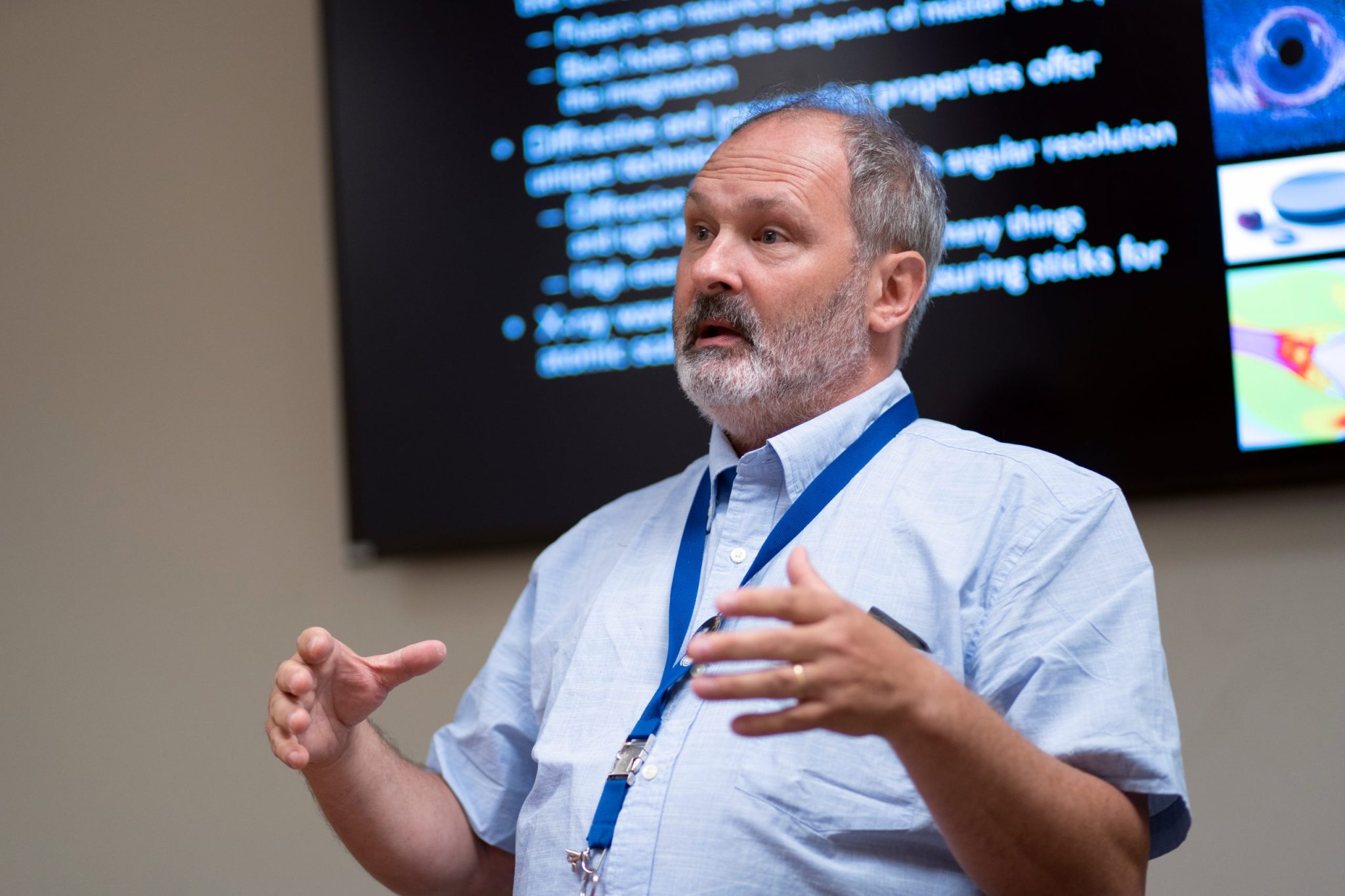Name: Keith Gendreau
Title: Principal Investigator for the Neutron Star Interior Composition Explorer (NICER) mission
Formal Job Classification: Astrophysicist
Organization: Code 662, X-ray Astrophysics Branch, Astrophysics Division, Science Directorate
What is most interesting about your role at Goddard?
What I do that I like, and is only possible at a place like Goddard, is that I get to look at crossbreeding of ideas from different fields. As an example, we developed an X-ray source to calibrate NICER. We are working with a hospital to use that X-ray source to make a new CT scan machine with a lower dose of radiation.
How does NICER support Goddard’s mission?
I am the principal investigator for NICER, which studies neutron stars – that is, almost dead stars, zombie stars. NICER launched in June 2017 and is now attached to the International Space Station.
NICER collects X-ray photons from pulsing neutron stars. We look at the shape of those pulses to measure the radius of those neutron stars. We then measure the mass. Mass and radius tell us the density, which is extremely high in neutron stars.
We are learning about the nature of matter at the highest density. Neutron stars are the densest objects in the universe that we can see directly. If they were a little denser, they would collapse into black holes. NICER helps us understand the beginning of the universe.
In addition, NICER demonstrated for the first time how pulsars can be used for deep space navigation in a way similar to that of GPS, but with a galactic infrastructure.
What attracts you to astrophysics?
My father and Carl Sagan made astrophysics interesting to me. As a child, I watched Carl Sagan’s “Cosmos” program. I went to Cornell University because Carl Sagan was a professor there, although I never met him, and majored in mathematics and physics. I went to MIT for a doctorate in astrophysics. My father was a college philosophy professor.
Math and astrophysics focus on rules and understanding relationships between things in the universe. In my ranking of understanding relationships, there is philosophy, mathematics, physics and then astrophysics.
What is special about Goddard?
In 1995, I got my Ph.D. and started working at Goddard. My dissertation involved work with Goddard.
Goddard is unique in that it has a great mix of scientists, engineers, managers, and support staff that together make everything work. Scientists think of great experiments to do and engineers along with managers and support staff make it a reality.
All these different people collectively inspire me. We are all doing what we want to do.
What makes a good scientist? A good manager?
Both good scientists and good managers need to have an open mind, listen to everyone, and integrate different viewpoints to make a new discovery in the case of a scientist, or make a mission that works, in the case of a manager. Goddard has a good mix of people with different viewpoints that makes us more efficient in achieving our goals.
As the principal investigator of NICER, I constantly make decisions to advance the mission. I always talk to as many people as possible on the team – managers, technicians, engineers, and support staff. Each offers a different perspective.
What are you proudest about your work?
I am very proud of how well NICER works. NICER is a small mission with a small cost that we built and delivered on schedule and under budget. NICER is very successful. NICER is the biggest producer of peer-reviewed papers of any experiment on the space station.
Who inspires you?
Richard Feynman was a theoretical physicist at Cornell and Caltech. Along with physics textbooks, he also wrote “Surely You are Joking, Mr. Feynman.” He said that you do not understand anything unless you can explain it to your mom.
What advice do you give new PIs?
I tell them that they must be able to explain what they want to do to their mom. You have to be able to explain any subject in a way that anyone can understand. If you have to resort to technical slang, then you do not really understand it yourself. So if you build a mission, do it using people who know what they are talking about.
I tell them to listen to everybody. If someone says that we have to do something in a specific way, ask why. If they cannot explain, then ask them to find a better way.
What are your hobbies?
I used to go back country camping, then I got married. Now our twins are my hobby.
How would you describe yourself?
Compared to our astrophysicists on the NICER team, I am not an expert. I always say that I am the simple caveman. I think I have an open mind and am a good listener.
I like to make connections. I am curious. I like to see if what we are working on in astrophysics can cross technical fields.
I like to build things.
Family is a big part of my life. My kids are very good at identifying dad jokes.
By Elizabeth M. Jarrell
NASA’s Goddard Space Flight Center, Greenbelt, Md.
Conversations With Goddard is a collection of question and answer profiles highlighting the breadth and depth of NASA’s Goddard Space Flight Center’s talented and diverse workforce. The Conversations have been published twice a month on average since May 2011. Read past editions on Goddard’s “Our People” webpage.




























